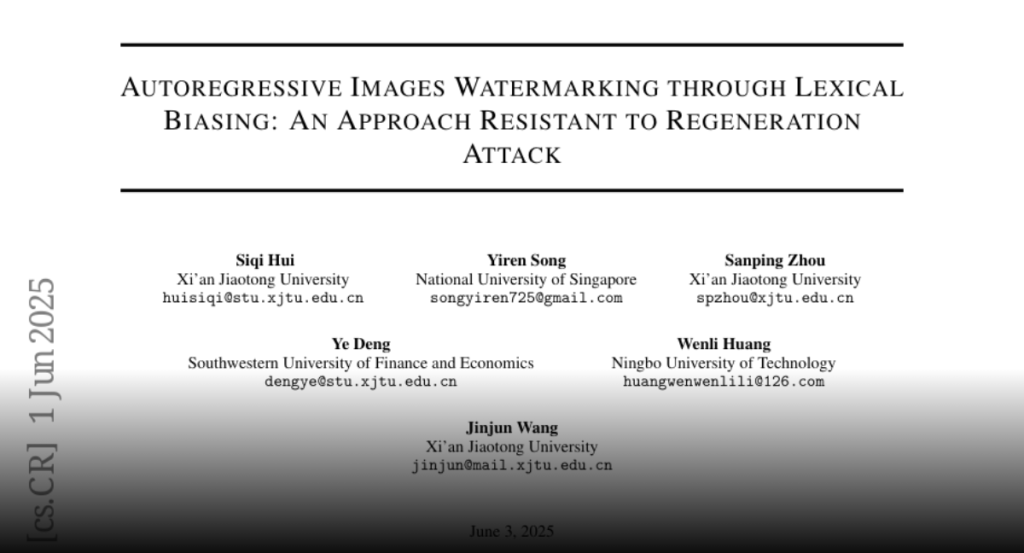Autoregressive (AR) image generation models have gained increasing attention for their breakthroughs in synthesis quality, highlighting the need for robust watermarking to prevent misuse. However, existing in-generation watermarking techniques are primarily designed for diffusion models, where watermarks are embedded within diffusion latent states. This design poses significant challenges for direct adaptation to AR models, which generate images sequentially through token prediction. Moreover, diffusion-based regeneration attacks can effectively erase such watermarks by perturbing diffusion latent states.
To address these challenges, we propose Lexical Bias Watermarking (LBW), a novel framework designed for AR models that resists regeneration attacks. LBW embeds watermarks directly into token maps by biasing token selection toward a predefined green list during generation. This approach ensures seamless integration with existing AR models and extends naturally to post-hoc watermarking.
To increase the security against white-box attacks, instead of using a single green list, the green list for each image is randomly sampled from a pool of green lists. Watermark detection is performed via quantization and statistical analysis of the token distribution. Extensive experiments demonstrate that LBW achieves superior watermark robustness, particularly in resisting regeneration attacks.

